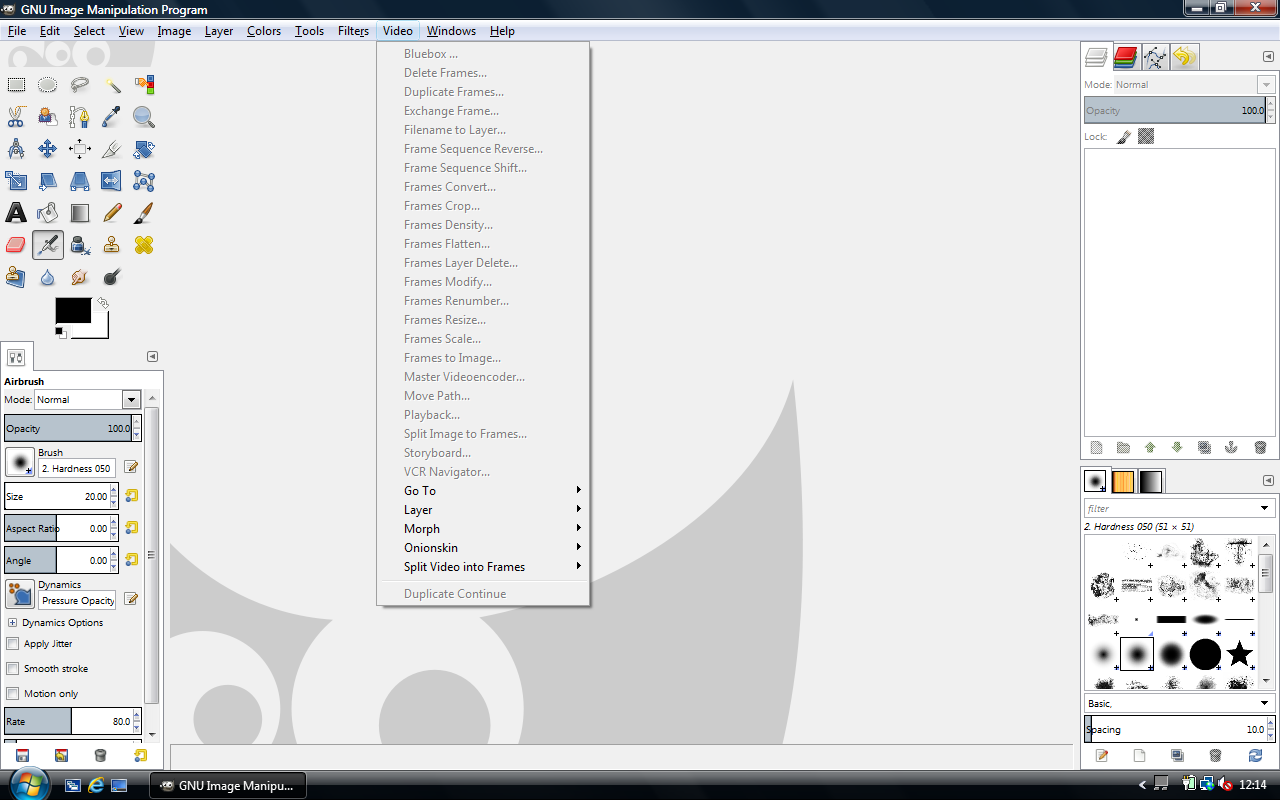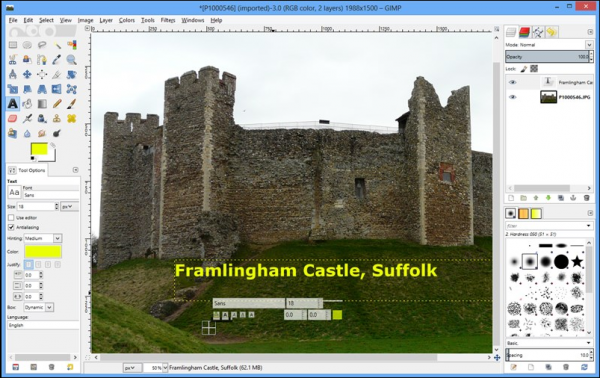
- #Gimp gap download install install#
- #Gimp gap download install update#
- #Gimp gap download install Patch#
- #Gimp gap download install software#
- #Gimp gap download install password#
#Gimp gap download install Patch#
So for now we are good but at the next rebuild the original source code will not contain our patch so probably will fail again. So I edited that Makefile file, compiled the source from where it stopped and everything seemed to work well. Both ways it will compile although the GAP extension will not work 100% the same (I guess). number-footnotes) but I think that `number-section` is what the original developer wanted. What I did was to find that line and replace the option from the `number` to `number-sections`. I just `grep`-ed the source tree and I found the the /gimp-gap-2.6.0/extern_libs/ffmpeg/ Makefile file is the source of the problem. So we have to search the source tree to find out where this texi2html is called like that. The script version that I have installed implements two distinct parameters: either `number-footnotes` or `number-sections` but not just simple `number`. So the error message simply tells us that the package builder just called the texi2html conversion script with an ambiguous/unexpected option called `number`. I dig in the source of the problem and usually fix it. Gmake: *** Error 2 The solutionĪs a Linux enthusiast and programmer I never surrender. Makefile:121: recipe for target 'doc/ffmpeg-doc.html' failed Try `texi2html -help' for more information. Option number is ambiguous (number-footnotes, number-sections) I tried and I've got the following error (yeah, shit happens): texi2html -monolithic -number doc/ffmpeg-doc.texi
#Gimp gap download install install#
Now, in Gentoo (the Linux distro I'm using and cherish for years) one may find the gimp-gap package on some external package overlays (like gentoo-zh or) and try to install it. If you don't then just grab the GAP 2.6 source code from /pub/gimp/plug-ins/v2.6/gap, compile it and install it. Depending on your OS/Linux distro you may find the gimp-gap package with easy and just install it. There is an extension/plug-in called Gimp Animation Package (shortly gimp-gap) that might just do that. I was just curious if the GIMP can help with this and it looks like it can. This task could be accomplished for instance with the aid of the FFmepg tool: Today I was interested in doing something unusual: converting a MPEG to an Animated GIF. With the free GIMP one can obviously edit raster graphics.

It is so popular that in my language (as well as in many other languages) we created even a word for a picture edited in Photo$hop: it's "photo$hopped".Īnyway, the Photo$hop was created only for the M$ Windows/MacOS world so as for the Linux world (and this blog is called My *nix world - and Linux is just a (U)nix-like system, right?) there is no Photo$hop but the free GNU Image Manipulation Program - the GIMP. Many of you have heard talking about the ubiquitous (Adobe) Photo$hop - the raster graphics editor. Once the installation is complete, click on the ' Launch' button to open the GIMP image editor.In the following I will show (1) how you can compile and install the Gimp GAP package from source code in Linux and (2) creating a patch file in Linux (Gentoo) that will help you to fix an issue found in the former source tree. The installation will get underway as shown.
#Gimp gap download install password#
Be sure to provide your password and hit ' ENTER' on your keyboard. Thereafter, you will be required to authenticate.
#Gimp gap download install software#
Search for GIMP in Software CenterNext, click on the ' Install' button to install GIMP on Ubuntu 18.04. To do this, Launch Ubuntu Software Center and search for GIMP as shown. Lastly, another way that you can install the GIMP image editor is using Ubuntu's Software Center. $ sudo apt install gimp gmic 4) Install GIMP from Software Center
#Gimp gap download install update#
Next, update your system and install GIMP, type: $ sudo apt update Next, install GIMP by adding the latest PPA, type: $ sudo add-apt-repository ppa:ubuntuhandbook1/gimp $ sudo ppa-purge ppa:otto-kesselgulasch/gimp

If you have his PPA sitting on your system, you first need to purge it as follows: $ sudo apt-get install ppa-purge Be advised that Otto-kesselgulasch has dropped his PPA citing personal reasons.

The other way you can install GIMP is by using the PPA. The installation will get underway and will be completed within a minute or two. Once snap is installed, install GIMP using the command: $ sudo snap install gimp First, ensure snap is installed on your system as shown. Install-GIMP-using-flathub 2) Install GIMP on Ubuntu using snapĪlternatively, you can also use snap packages to install GIMP on your Ubuntu machine.


 0 kommentar(er)
0 kommentar(er)
